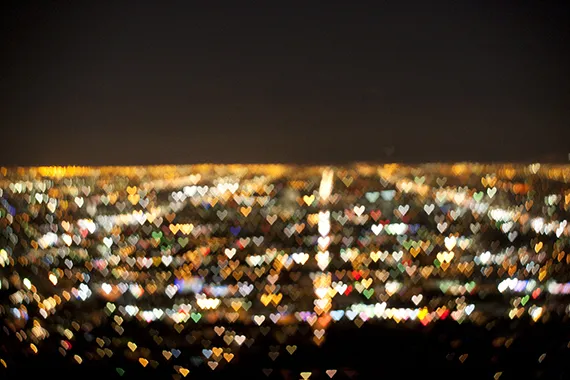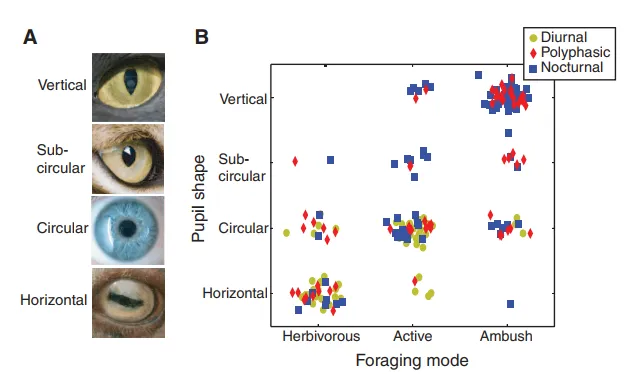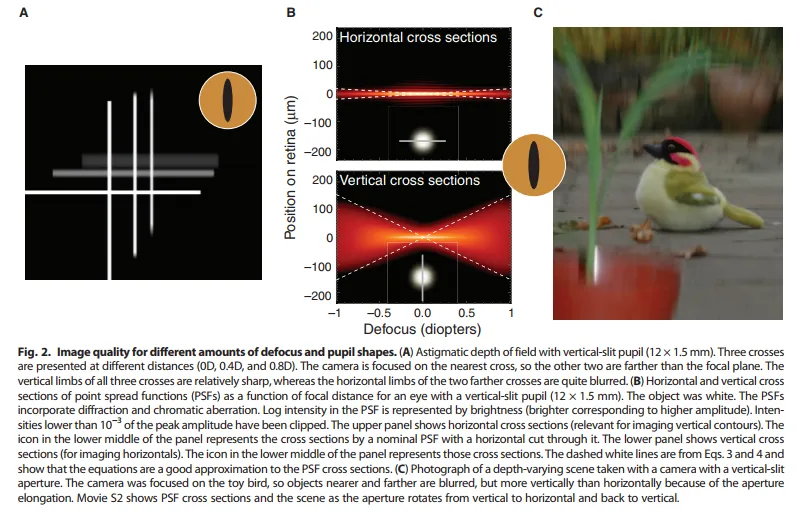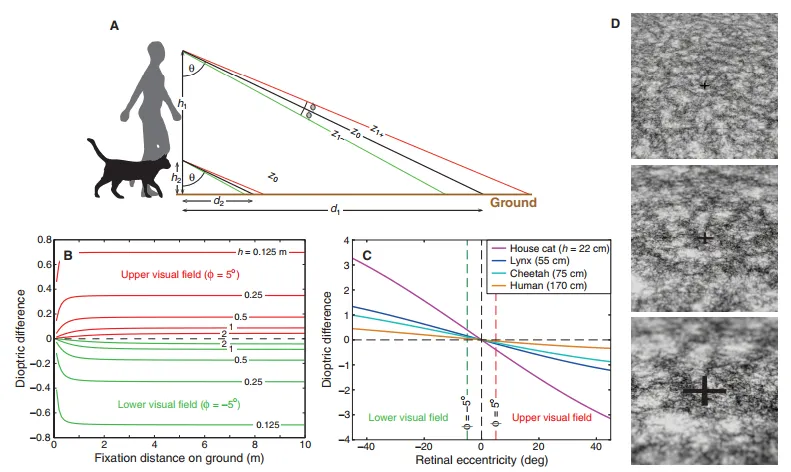Let's set the mood for this post with the suitable music background: "Eye Of The Tiger"

This image was stolen from here
Bokeh!
If you consider yourself as a photography enthusiast, you are certainly familiar and a bit obsessed with the bokeh.
However, if you are not, the bokeh is that specific blur of the background, like in this example:

Source
There is an interesting old trick: you can cut the cardboard in the shape you want and get your own, custom bokeh!
Or buy one of these Petzval lenses and get some cheezy romantic pics:

Love is in the air, image is from here
How is this related to animals?
You have probably noticed that different animals have different pupils ("eye openings"), and yes, all of them will experience a different kind of blur/ bokeh!?
There is another important thing, also known in the photography world.
The size of the aperture will affect the sharpness of your images.
There is a sweet spot, usually about 2x smaller aperture from the "fully opened" will provide the best resolution.
And you are doing it instinctively when you gaze into something, you close your eyes a bit, to adjust the amount of light and make the pupil just perfect.
Predator-prey relations:

You can see something very interesting here, herbivores and carnivores have the slits in perpendicular directions.
What is the bokeh experienced by my cat?

As you can see, vertical slit means that the prey will be literally "tagged" with a vertical bar. Here, eat me!
And there will be one more thing, focusing into the depth. Very important if you are a cat, walking low and very unimportant if you are a hoooman who is tall. (*cats call us hoomans)

Strange eyes...
...of a cuttlefish are W-shaped, not without a reason.
With a "fish-eye" extremely wide-angle lens, it's important to maintain the illuminance, because in the water - the shadow means sudden death.

I hope you got a closer look into the eyes of animals
Sources:
- Banks, Martin S., et al. "Why do animal eyes have pupils of different shapes?." Science advances 1.7 (2015): e1500391. pdf
- Mäthger, Lydia M., et al. "The W-shaped pupil in cuttlefish (Sepia officinalis): functions for improving horizontal vision." Vision research 83 (2013): 19-24.
AP. pdf
Many Thanks to SteemSTEM community
